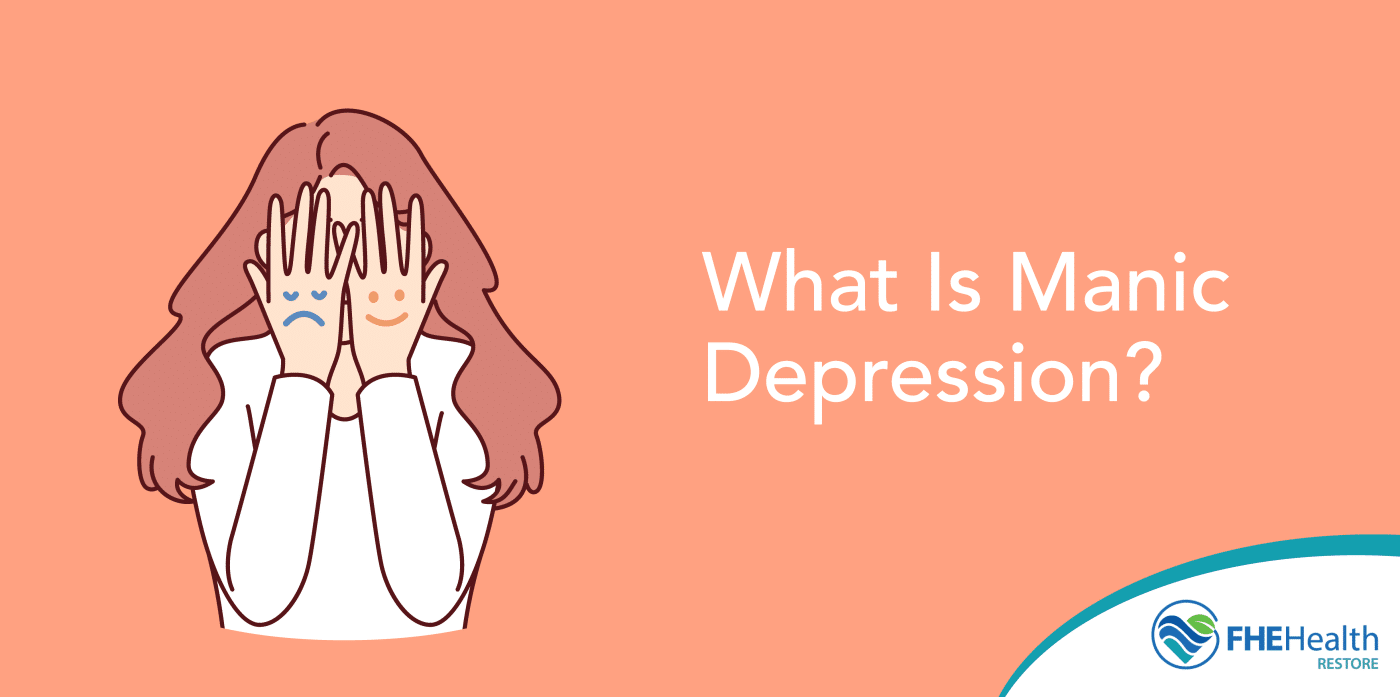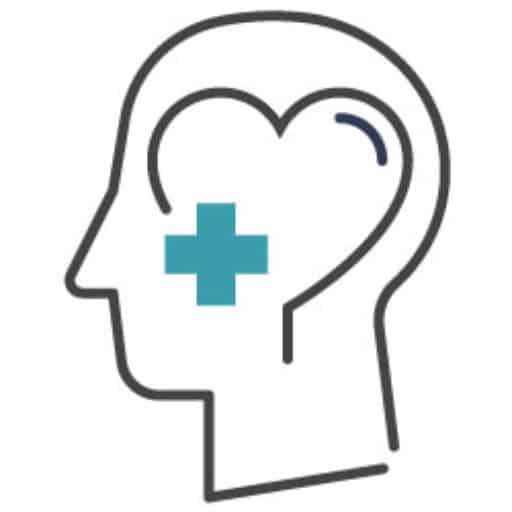Manic depression, now more commonly referred to as bipolar disorder, is a common mental health condition marked by extreme shifts in mood, energy and activity levels. According to Johns Hopkins, approximately 9.5% of American adults live with some form of depressive illness, including bipolar disorder.
While the term “manic depression” is sometimes used casually to describe mood swings, it’s a medical diagnosis with specific criteria. These intense mood episodes, ranging from the highs of mania to the lows of depression, can significantly impact daily functioning. Understanding the symptoms, triggers and treatment options for this condition helps start the healing process for those affected.
Symptoms of Mania and Depression
Manic depression involves two primary types of mood episodes: mania and depression. Each has distinct symptoms that can vary in severity and duration.
Mania is characterized by an elevated or irritable mood lasting for at least 1 week. During a manic episode, individuals may experience increased energy, reduced need for sleep and heightened confidence. Other symptoms include rapid speech, impulsive behavior and engaging in risky activities, such as excessive spending or substance use. In severe cases, mania can lead to delusions or hallucinations, requiring immediate medical attention.
Depressive episodes, on the other hand, involve prolonged feelings of sadness or hopelessness. Individuals may lose interest in activities they once enjoyed, struggle with fatigue or experience changes in appetite and sleep patterns. Thoughts of worthlessness or even suicidal ideation may emerge during these episodes.
The frequency and intensity of manic and depressive episodes vary between individuals. Some people may experience a mix of symptoms in rapid succession, known as mixed episodes, adding another layer of complexity to the condition. Recognizing these symptoms is a solid first step toward diagnosis and treatment. If you or someone you know exhibits signs of mania or depression, they may need professional help.
How It Differs From Other Mood Disorders
Manic depression is often confused with other mood disorders, but it has distinct features that set it apart. Understanding these differences helps with accurate diagnosis and effective treatment.
One key difference is the presence of mania. Unlike major depressive disorder, which involves only depressive episodes, bipolar disorder includes periods of mania or hypomania (a less severe form of mania). These high-energy states are a hallmark of manic depression and are absent in other mood disorders like persistent depressive disorder or generalized anxiety disorder.
Another distinguishing factor is the episodic nature of manic depression. While conditions like dysthymia involve chronic, low-grade depressive symptoms, bipolar disorder characteristically alternates between high and low extremes. This cycling pattern can occur over weeks, months or even years, depending on the individual and the type of bipolar disorder they have.
It’s also important to note that bipolar disorder shares some overlapping symptoms with borderline personality disorder (BPD), such as mood instability. Where they differ is that BPD is primarily a personality disorder involving issues with interpersonal relationships and self-image, whereas bipolar disorder is a mood disorder with defined episodes of mania and depression. Proper diagnosis often involves a thorough psychological evaluation and a review of personal and family medical history. Misdiagnosis can lead to inappropriate treatment.
Common Triggers and Risk Factors
Manic depression is influenced by a combination of genetic, biological and environmental factors. Understanding common triggers and risk factors can help individuals manage their condition and reduce the likelihood of severe episodes.
- Genetics play a significant role in bipolar disorder. Research shows that individuals with a family history of manic-depressive disorder are at higher risk of developing the condition. However, not everyone with a genetic predisposition will experience symptoms, suggesting that environmental factors also contribute.
- Stressful life events, such as job loss, divorce or the death of a loved one, are common triggers for mood episodes. These stressors can disrupt sleep patterns and overall mental stability, increasing the likelihood of both manic and depressive episodes.
- Substance use is another major risk factor. Drugs and alcohol can exacerbate symptoms or interfere with the effectiveness of treatment. Stimulants, for example, may trigger manic episodes, while depressants can deepen depressive states.
- Sleep disturbances also play a crucial role in mood regulation. Irregular sleep patterns or chronic insomnia can provoke episodes of mania or depression, further complicating the condition.
- Hormonal changes, particularly in women, can act as triggers. Pregnancy, menopause or fluctuations in hormonal levels during the menstrual cycle may influence the severity and frequency of mood episodes.
Treatment Options for Managing Bipolar Disorder
Effective management of manic depression symptoms calls for a comprehensive treatment approach that addresses both the symptoms and the underlying causes of the condition. Treatment plans often involve a combination of medication, therapy and lifestyle modifications.
Medication is a cornerstone of bipolar disorder treatment. Mood stabilizers, such as lithium or anticonvulsants, help regulate the extreme highs and lows associated with the condition. Antipsychotic medications may also be prescribed for severe manic episodes, while antidepressants are sometimes used cautiously to treat depressive symptoms.
- Therapy plays an important role in managing manic depression, especially talk therapy and peer support.
- Cognitive behavioral therapy (CBT) helps individuals identify and modify thought patterns that contribute to mood episodes.
- Interpersonal and social rhythm therapy focus on establishing consistent daily routines, including regular sleep patterns, to stabilize mood.
Psychoeducation is another valuable tool for individuals and their families. Learning about the symptoms, triggers and treatment options for bipolar disorder empowers individuals to take an active role in their recovery. Family therapy can improve communication and support within the household, fostering a more stable environment.
Lifestyle changes can also be helpful. Regular exercise, a balanced diet and adequate sleep can improve overall well-being and reduce the severity of mood episodes. Stress management techniques, such as mindfulness or meditation, can further enhance emotional resilience. In severe cases, hospitalization may be necessary to ensure safety and stabilization during acute manic or depressive episodes. Intensive outpatient programs or partial hospitalization can provide structured support during the recovery process.
Take Control of Bipolar Disorder Symptoms Today
Manic depression is a complex condition, but it’s manageable with the right support and treatment. People with manic-depressive disorder can lead fulfilling lives. If you or a loved one is struggling with manic-depressive disorder, Restore Mental Health is here to help. Our compassionate team offers evidence-based therapies and personalized care plans designed to address the unique challenges of bipolar disorder. Contact Restore Mental Health today and take the first step toward a brighter future.



